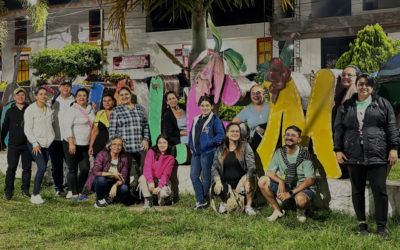Microfinance for small-scale farmers – what is it?
Microfinance is a term which entered the mainstream financial jargon in the past decades, although since the late 90’s it is described as “financial inclusion”¹.
Agri-lending in the microfinance context refers to loans given to Smallholder and Emergent Farmers (SEFs). The SEFs normally operate a mix of subsistence and commercial farming, in most cases are very little mechanised and have very small (if at all) profit margins. They also represent the absolute majority of farmers in Zambia, a largely agricultural nation.
Lending to SEFs is not something traditional banks are equipped to do, as such farmers have no financial records, no previous credit history and no security they can provide for the loans. This puts them at a disadvantage when it comes to accessing financial services, compounded by the fact that there are hardly any financial institutions in their localities.
Microfinance banks have developed a specific methodology allowing them to mitigate the information asymmetry² inherent in lending and to extend credit to such farmers with extraordinary success³.

Challenges for farmers and microfinance institutions
There are several challenges that SEFs encounter in accessing small loans and other financial services. Apart from not being seen as “bankable”, SEFs are located in remote areas where financial institutions do not have any presence, resulting in them being one of the most financially excluded groups. They face challenges in accessing markets for their products, due to bad infrastructure and little negotiating power with the actors higher on the value chain. Being poorer than the average urban population, they lack a financial buffer for bad times, as well as valuable assets they could sell in case of trouble, making them very vulnerable to external shocks.
For microfinance institutions the biggest challenge is represented by the very high transaction costs of providing services to SEFs. The fact that the individual transaction amounts are very low and that the costs of reaching and interacting with them are very high (for example each visit to a farmer must be done by a 4×4 vehicle) was a major impediment for the scaling up of rural finance activities until now.
How does the future of agri-lending look like?
AB Bank’s Zambia response to the challenges faced by both farmers as well as microfinance institutions lays on three pillars: digitalisation, partnerships and the use of automated credit decisioning.
Digitalisation
In the last three years, AB Bank embarked in a digital transformation journey aimed at offering every farmer in Zambia a wide range of financial services, accessible anywhere, every time, no matter how remote the farmer is located. This was achieved in the form of a digital wallet⁴, which is basically a bank account within the mobile phone. Anybody with any kind of phone⁵ can dial a short code and open a bank account in less than a minute, without having to travel to a branch. Through this account the farmers can receive funds from any mobile money user, can transfer the funds to any bank, mobile money operator or mobile wallet in the country and can save receiving an interest rate of 10% on their funds. Through digitalisation, microfinance institutions can reach farmers in the most remote places, at only a fraction of the cost of the traditional⁶ approach.
Partnerships
Partnerships are the central pillar for AB Bank in providing access to finance to small-scale farmers. The German Development Corporation (GIZ) supports farmers through capacity building, product development and access to market. The most important partnership the Bank has is with COMACO⁷ (Community Markets for Conservations), a conservation farmer cooperative with over 200,000 members. COMACO purchases and transports crops from remote regions, where few other buyers will reach, and pay premium prices to give farmers the value they deserve.
Automated credit decisioning
Use of automated credit decisioning is the third pillar allowing the Bank to reduce transaction costs. With support from German Development Corporation, GIZ, the Bank is developing agro-scorecards to automate credit decisioning. Symbiotics, a Geneva-based impact investing fund manager, is also supporting the Bank with the development of agro scorecards for new regions, allowing us to extend our agri-finance offering county-wide.
These three pillars allow AB Bank to fulfil its mandate of financial inclusion at a large scale and if successful can provide the blueprint for a new financial inclusion paradigm – we call this financial inclusion 2.0.
Cosmin Olteanu
Chief Executive Officer of AB Bank Zambia
Muze Sychaba
Chief Business Officer of AB Bank Zambia
¹ “Although usually defined as all types of financial services that are provided to low‐income people and seen as a tool to fight poverty, a more accurate description of this intervention is that of a tool against financial exclusion. Thus, a more appropriate term to designate the activities which are usually circumscribed by the name of microfinance would be financial inclusion”, Cosmin OLTEANU, Overindebtedness in Microfinance: Case-study of the Clientele of Financiera CREAR in Los Olivos, Lima Norte, Peru, Grin Verlag, 2011, p. 7
² “Information asymmetry is a major problem in many markets where people on one side of a transaction have more information than those on the other side of a transaction. One example of a market where information asymmetry could exist is the credit market. Borrowers, or those who wish to obtain credit, know more about the riskiness of the projects they wish to invest in than lenders, who wish to sell credit at a fixed interest rate.”
Information Asymmetry in Microfinance, https://blogs.cornell.edu/info2040/2018/11/18/information-asymmetry-in-microfinance/. Retrieved on 21/02/2022
³ Traditionally, the repayment rates of microfinance institutions are above the ones of traditional banks. In the case of agri-lending, these rates are even higher.
⁴ More about AB Bank’s digital wallet on www.etumba.com
⁵ The important concept here is “feature phone”, meaning the most basic kind of mobile phone with buttons
⁶ Also known as “brick and mortar” model
⁷ To learn more about COMACO and their extraordinary work in conservation farming visit www.itswild.org









Great reading
This is very interesting!
What kind of agriculture services do you provide to farmers and how do one become your member.
To tell the truth, I hadn’t been aware of microfinance for small-scale farmers to a great extent before this moment, but after reading your article, I came to the conclusion that it is a really important term which carries an important idea. From my point of view, all farmers need to have an opportunity to get financial support and it is truly important to develop new innovative strategies for this. It is so cool that there is such an innovation as digitalisation because it opens a great deal of opportunities and prospects to farmers, making them more free in many respects. I think that one of the most significant advantages of digitalisation is that it improves communication and increases efficiency. Of course, it is really cool that In the last three years, AB Bank embarked in a digital transformation journey because I think that it is a great step in development and a rational decision which will lead to visible positive changes in the future, improving the standard of farmers’ living to a great extent.
the article is interesting, but tell me is it true that small farms do business this way? I know a guy and he wants to buy a small farm. I want to advise him to read your article.